41 compare the movement of surface and deep currents
› trips › morningMolokini Snorkel Tour & Turtle Town Snorkel Tour - Pride Of Maui The open decks ensure ease of movement and great comfort. Spacious Cabin Our spacious main cabin features a hardwood bar, two restrooms, stainless galley, and of course, ample room for dancing! Safe, Easy Water Access With three submerged stairways and wide platforms getting into the water and back on board is efficient and easy. siepe-hahn.de › deep-underground-military-bases-mapdeep underground military bases map. The vast site covers ... The vast site covers more than 650 acres and has 15 dry docks, four miles of waterfront, 25 tidal berths and five basins.About Military Of Underground Map Bases Deep.Petersburg, Russia, at Tripadvisor.Deep Underground Military Bases By now, I am clear on a few simple facts.Rex will present evidence suggesting American space scientists, in ...
Understanding Surface Currents vs Deep Ocean Currents Deep currents are driven by temperature and water density/salinity. Of course, deep currents impact surface currents, which carry warm water to the poles. Surface currents are also driven by global wind systems fueled by energy from the sun. Factors like wind direction and the Coriolis effect play a role.

Compare the movement of surface and deep currents
Surface currents vs. Deep currents by Cedric Wright - Prezi Surface currents vs. Deep currents Occur in water Are caused in three ways Used in oceans currents moving water can (on occasions) can go deep into water Deep Currents Surface Currents Both Movements deep inside water Carries cold water becomes warm movements on the surface of 9.5 Currents, Upwelling and Downwelling - Introduction to ... 9.5 Currents, Upwelling and Downwelling. The movement of surface currents also plays a role in the vertical movements of deeper water, mixing the upper water column. is the process that brings deeper water to the surface, and its major significance is that it brings -rich deep water to the nutrient-deprived surface, stimulating. Earth's Waters 4-4 Notes Flashcards - Quizlet Compare and contrast surface currents and deep currents. They are both are moving water that flows through oceans. Surface currents are towards the top of the ocean, can be warm or cold, and are controlled by winds. Deep currents are low, deep in the ocean, cold, and are controlled by density. How does upwelling effect marine life?
Compare the movement of surface and deep currents. › data › iceIce Cover: NOAA Great Lakes Environmental Research Laboratory ... Ice Cover Forecasting. GLERL conducts research on ice cover forecasting on two different time scales: short-term (1-3 days) and seasonal. GLERL's short-term ice forecasting is part of the Great Lakes Coastal Forecasting System, a model used by the National Ocean Service to predict wind, waves, currents, and more. Oceanography Chapter 7 Test Flashcards - Quizlet Surface currents develop from friction between the ocean and the wind that blows across its surface. The circular movement of surface water currents driven by the major wind belts are called gyre Do Western boundary currents such as the Gulf Stream transport warm or cold water from the tropics towards higher latitudes? Explain your answer. PDF CHAPTER SECTION 1 Currents Not all ocean currents are found at the surface. Movements of ocean water far below the surface are called deep currents. Unlike surface currents, deep currents are not controlled by wind. Deep current move-ments are controlled by water density. Density is the amount of matter in a given space or volume. The density of ocean water is affected by Ocean currents- The movement of life ⋆ TheScientificRevelation Ocean currents are the movement of water. They are mainly of two type Surface and Deep ocean currents. Surface currents are found on the surface of the ocean and driven by wind and Coriolis force. On the other hand, deep ocean currents are driven by density difference, salinity, and temperature.
Ocean Currents Flashcards - Quizlet Process that brings the deep cold ocean currents up to the surface. Convection currents. reason surface currents are at the surface of the ocean. they are warmer and less salty. Surface currents. A horizontal movement of ocean water that is caused by the wind which occurs at or near the oceans surface. Two types of ocean currents. Surface and ... a. Explain how deep currents form and move in the ocean. b ... a. Deep currents are formed when the density of the water changes due to temperature and salinity. These currents mix the ocean water by moving the cold water toward the equator and the warm water toward the poles. b. Surface currents, which are influenced by the wind, takes place within several hundred meters deep. chapter 7 oceanography test Flashcards - Quizlet (2) Ekman transport moves surface seawater offshore; cool, nutrient-rich deep water comes up to replace displaced surface water (coastal upwelling - west coast) (3) deep ocean currents reach landmasses and are forced up. (4) can also be caused by offshore winds, seafloor obstruction, coastal geometry change. high or low bio. productivity? high!!! Ocean Surface Currents - University of Hawaiʻi at Mānoa Ocean surface currents tend to form ring-like circulation systems called gyres. A gyre is a circular ocean current formed by a combination of the prevailing winds, the rotation of the Earth, and landmasses. Continents interfere with the movement of both surface winds and currents. Gyres form in both the northern and southern hemispheres.
Ocean Currents and Climate - National Geographic Society worldwide movement of water (currents) in the ocean. ocean conveyor belt. Noun. system in which water moves between the cold depths and warm surface in oceans throughout the world. Also called thermohaline circulation. rip current. Noun. a strong flow of water running from the shore to the open ocean, sea, or lake. Compare and Contrast Deep ocean currents, and surface curren Surface currents are caused by wind blowing across the atlantic. (Affrects the top 30 feet) Surface currents Deep ocean currents Circulate tempature Move in a circular fomation called a Gyre. Colder water sinks and the warmer water rises to the top which helps bring oxygen down to animals at the bottom of the ocean. Show full text PDF CHAPTER SECTION 1 Currents - WPMU DEV Not all ocean currents are found at the surface. Movements of ocean water far below the surface are called deep currents. Unlike surface currents, deep currents are not controlled by wind. Deep current move-ments are controlled by water density. Density is the amount of matter in a given space or volume. The density of ocean water is affected by Currents, Waves, and Tides | Smithsonian Ocean Currents. A large movement of water in one general direction is a current. Currents can be temporary or long-lasting. They can be near the surface or in the deep ocean. The strongest currents shape Earth's global climate patterns (and even local weather conditions) by moving heat around the world. Surface Currents
Science Benchmark #2 Flashcards - Quizlet Compare the movement of surface and deep currents. deep move up and down surface follow global atmospheric patterns and only move on the surface What process brings the deep cold ocean currents up? convection How do clouds form? When warm air rises it expands and cools.
manoa.hawaii.edu › exploringourfluidearth › nodeContinental Movement by Plate Tectonics | manoa.hawaii.edu ... Convection currents drive the movement of Earth’s rigid tectonic plates in the planet’s fluid molten mantle. In places where convection currents rise up towards the crust’s surface, tectonic plates move away from each other in a process known as seafloor spreading (Fig. 7.21). Hot magma rises to the crust’s surface, cracks develop in ...
en.wikipedia.org › wiki › EarthEarth - Wikipedia This gives an apparent movement of the Sun eastward with respect to the stars at a rate of about 1°/day, which is one apparent Sun or Moon diameter every 12 hours. Due to this motion, on average it takes 24 hours—a solar day—for Earth to complete a full rotation about its axis so that the Sun returns to the meridian. The orbital speed of ...
PDF Activity: Ocean Currents - Weebly There are: Surface currents are driven by wind and follow global atmospheric patterns. Cold surface currents move from the polar regions to the equatorial zones, and warm surface current move in the oppo site way. Deep currents are caused by the differences in water densities.
Ocean Circulation: Surface Water and Deep Water | Earth ... The colors are a bit hard for me to see, but note that in the North Atlantic, a surface current flows north and a deep current flows south. This means that deep water forms in the North Atlantic. It's important to appreciate that any Figure drawn at this scale, the entire ocean, is approximate.
What is the difference between surface current and deep ... Best Answer. Copy. Surface currents depend on temperature and wind which is in the atmosphere but deep water currents do not as it occurs under water. Wiki User. ∙ 2010-03-15 15:52:28. This ...
› classzone-retiredClasszone.com has been retired Connected Teaching and Learning. Connected Teaching and Learning from HMH brings together on-demand professional development, students' assessment data, and relevant practice and instruction.
› 155278 › marsquakes-areMarsquakes are Caused by Shifting Magma - Universe Today Apr 06, 2022 · On Earth, convection currents in the molten iron in Earth’s outer core help create our planet’s magnetosphere. The convection moves the molten iron around and creates electrical currents ...
New questions in Biology - Brainly.com Surface currents refer to movement of the top layer of ocean water. Surface water flows in to replace the sinking water, which in turn becomes cold and salty enough to sink. examples of surface ocean currents are California Current (Cal) in the Pacific ocean basin and the Canary Current (Can) in the Atlantic ocean basin. Deep ocean currents
Earth's Waters 4-4 Notes Flashcards - Quizlet Compare and contrast surface currents and deep currents. They are both are moving water that flows through oceans. Surface currents are towards the top of the ocean, can be warm or cold, and are controlled by winds. Deep currents are low, deep in the ocean, cold, and are controlled by density. How does upwelling effect marine life?
9.5 Currents, Upwelling and Downwelling - Introduction to ... 9.5 Currents, Upwelling and Downwelling. The movement of surface currents also plays a role in the vertical movements of deeper water, mixing the upper water column. is the process that brings deeper water to the surface, and its major significance is that it brings -rich deep water to the nutrient-deprived surface, stimulating.
Surface currents vs. Deep currents by Cedric Wright - Prezi Surface currents vs. Deep currents Occur in water Are caused in three ways Used in oceans currents moving water can (on occasions) can go deep into water Deep Currents Surface Currents Both Movements deep inside water Carries cold water becomes warm movements on the surface of

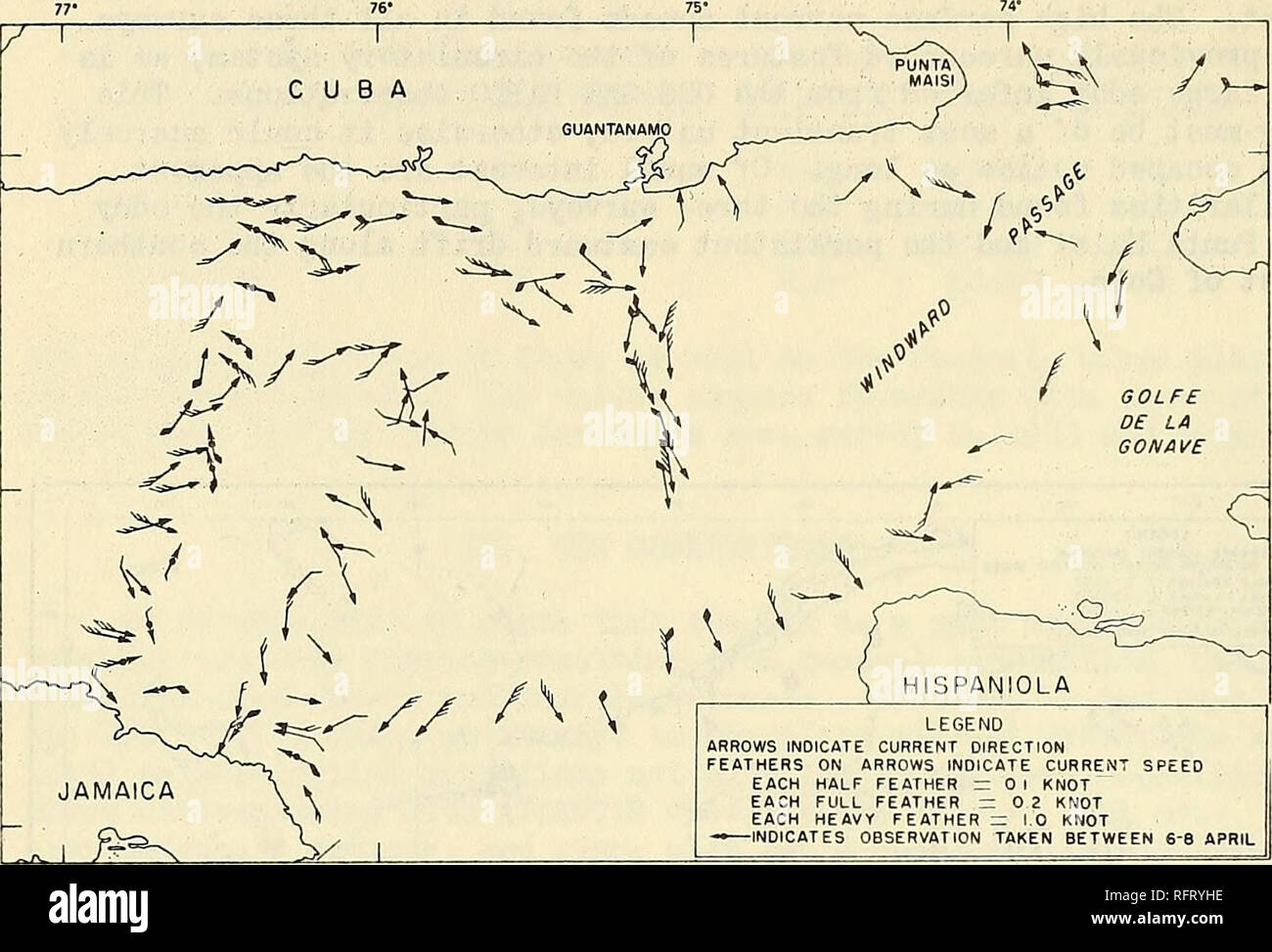


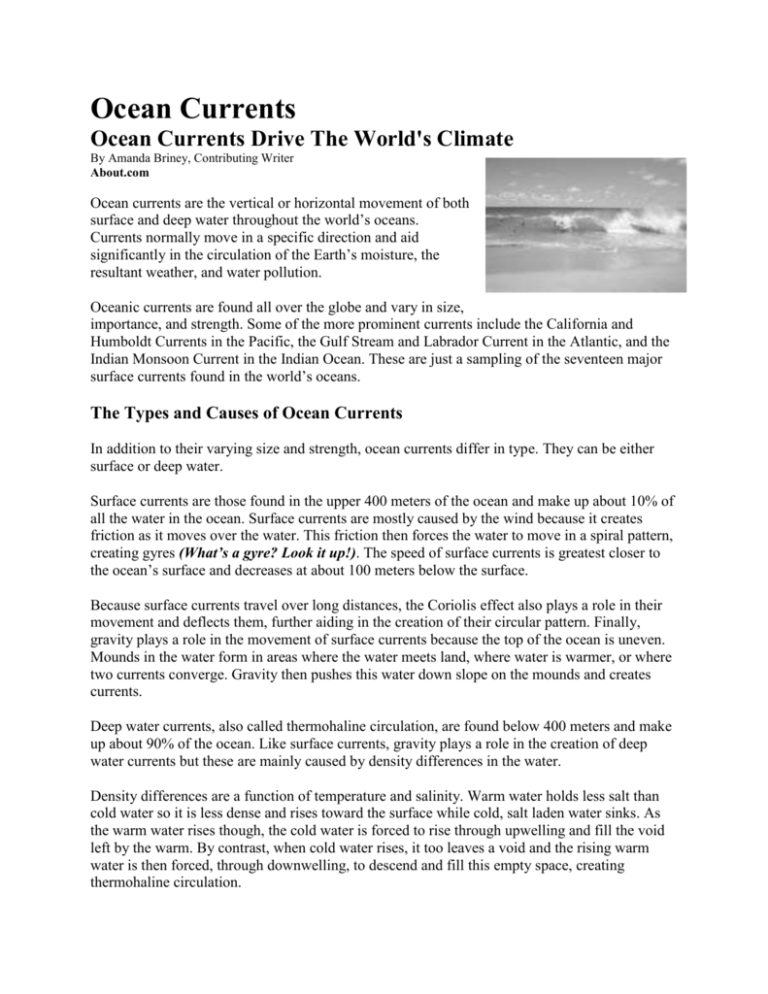
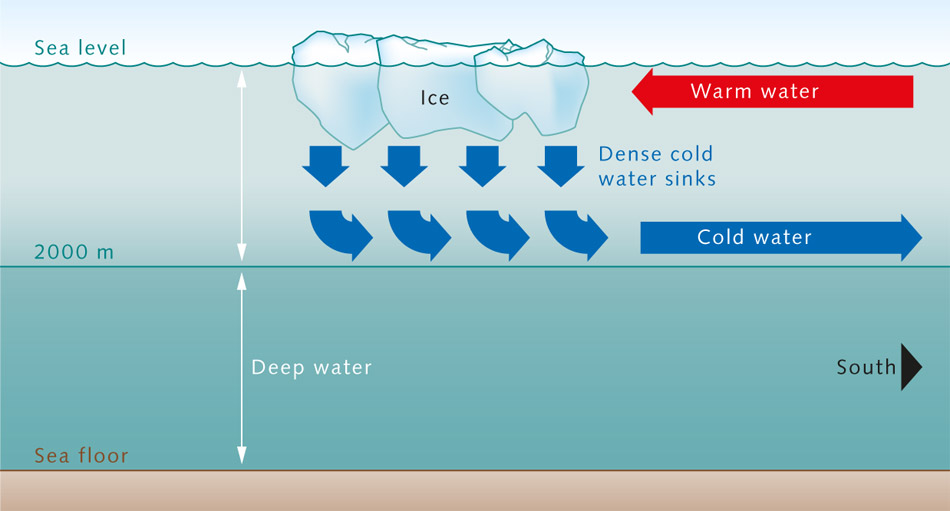

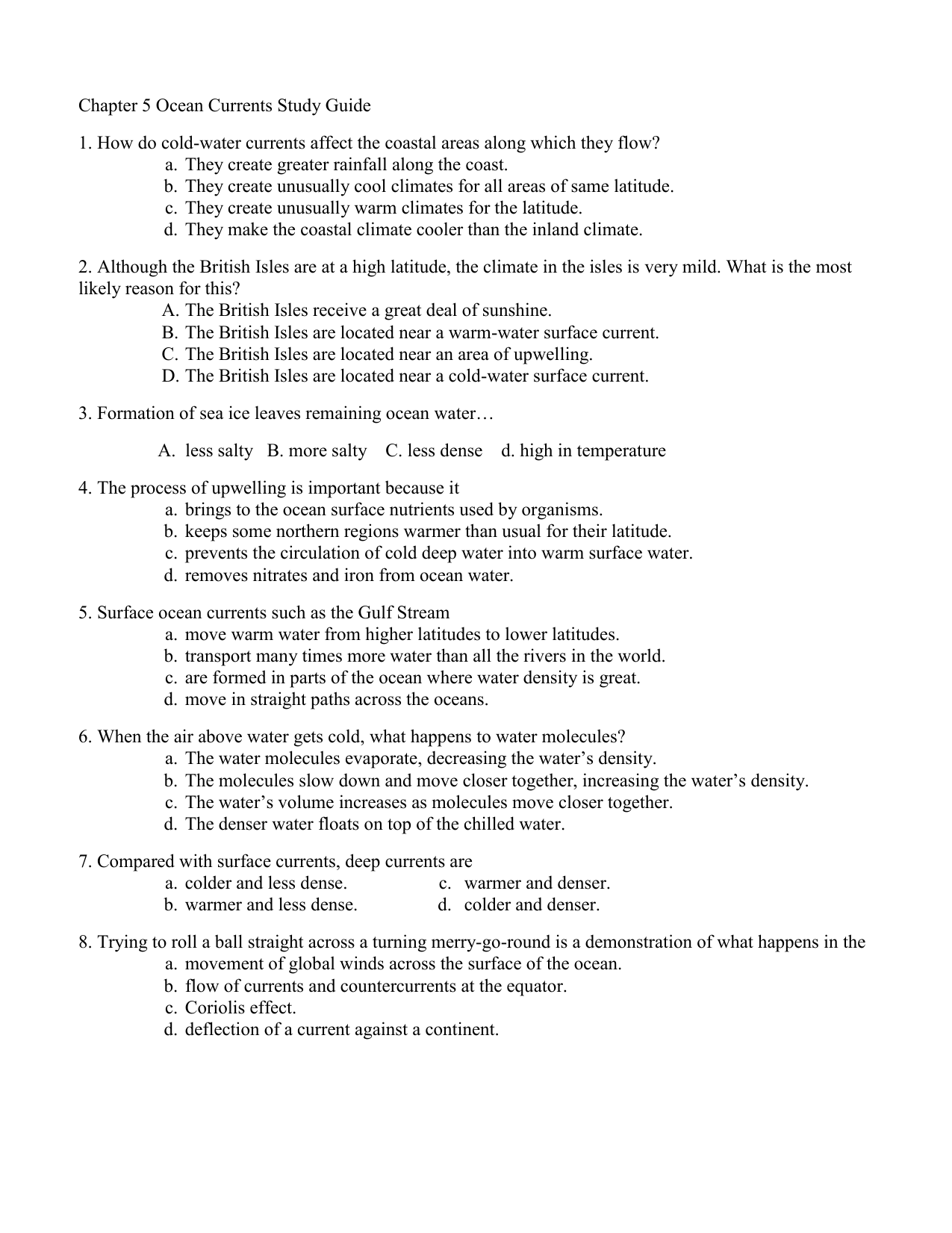

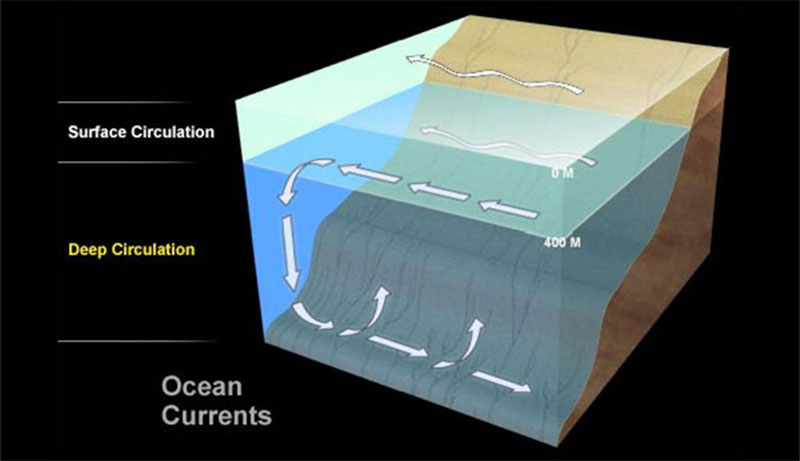
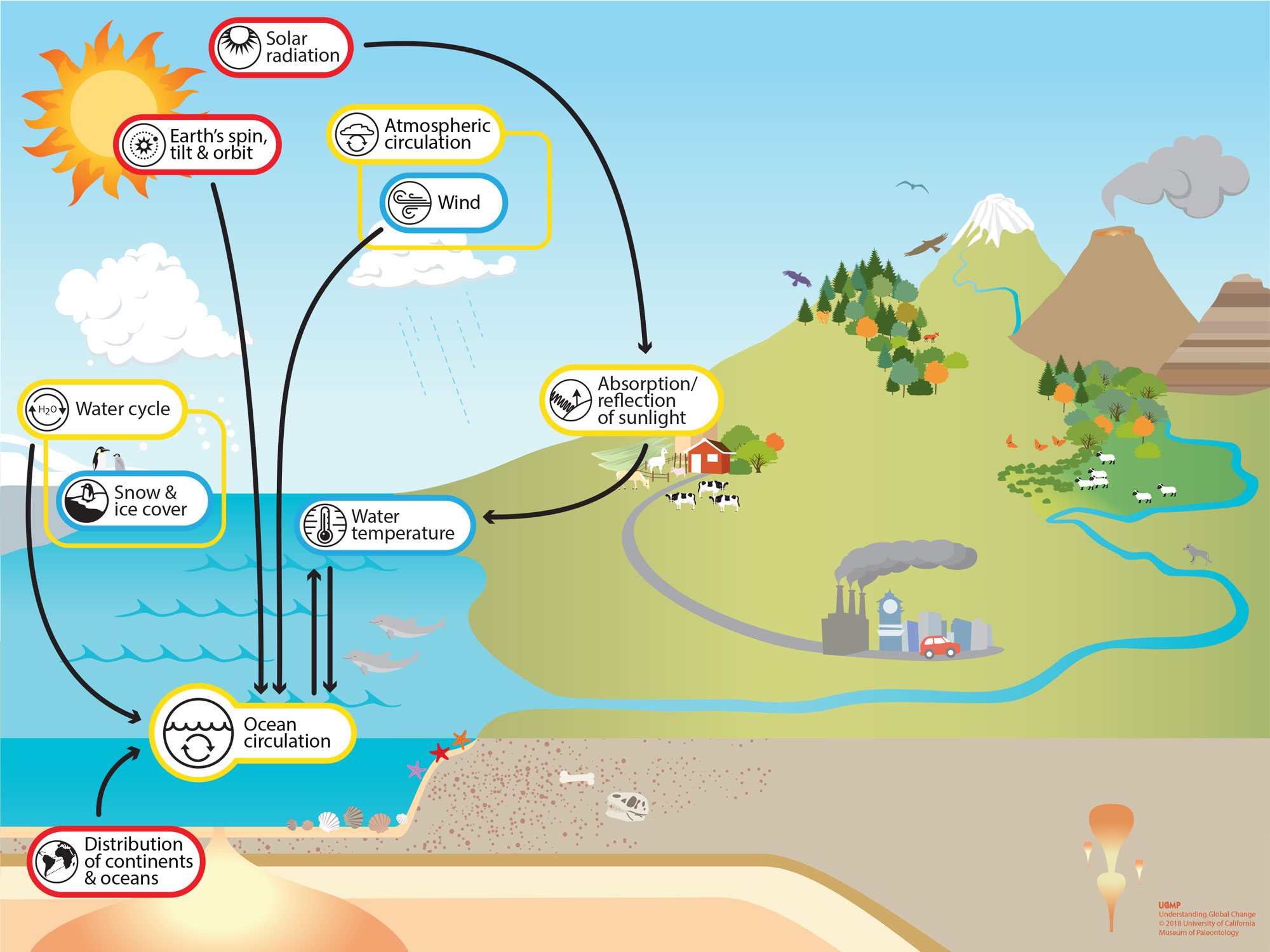
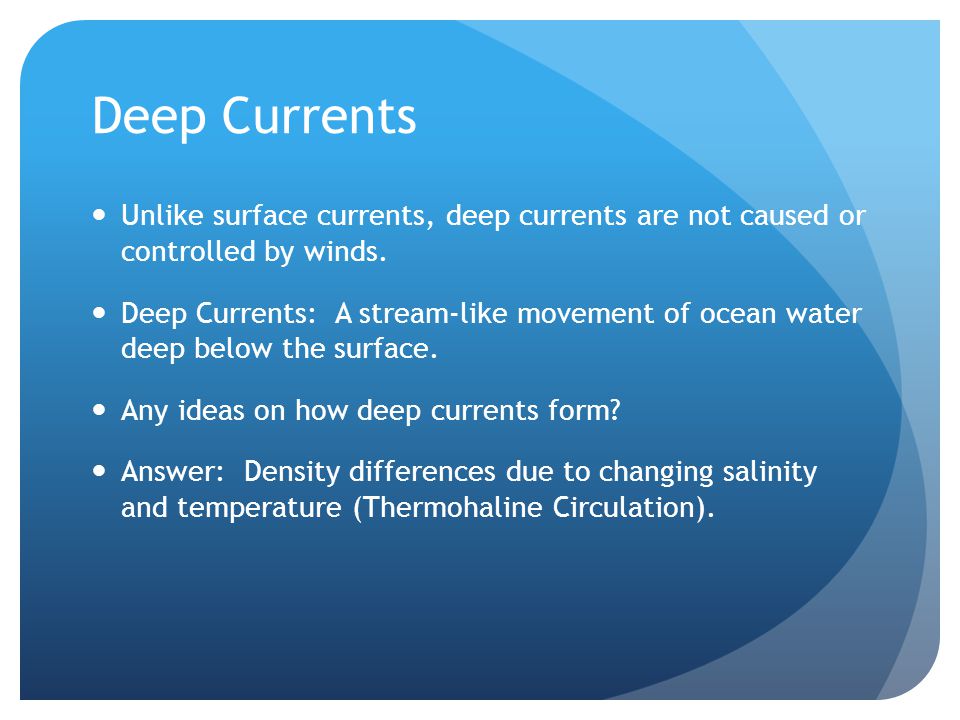

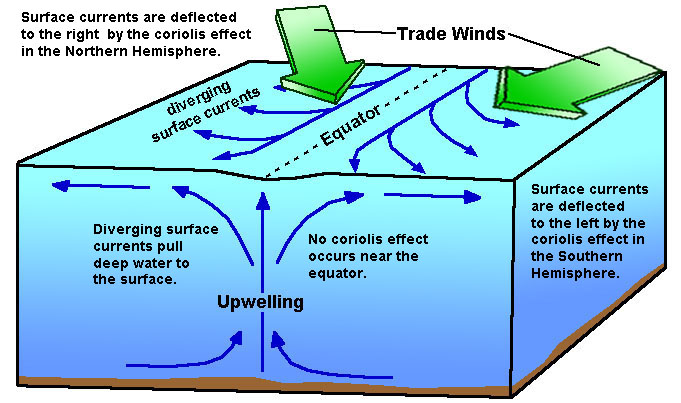

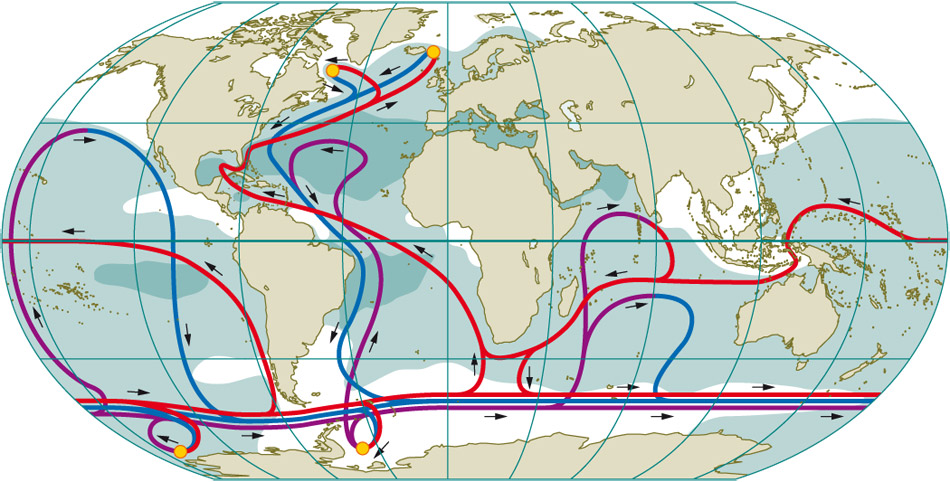
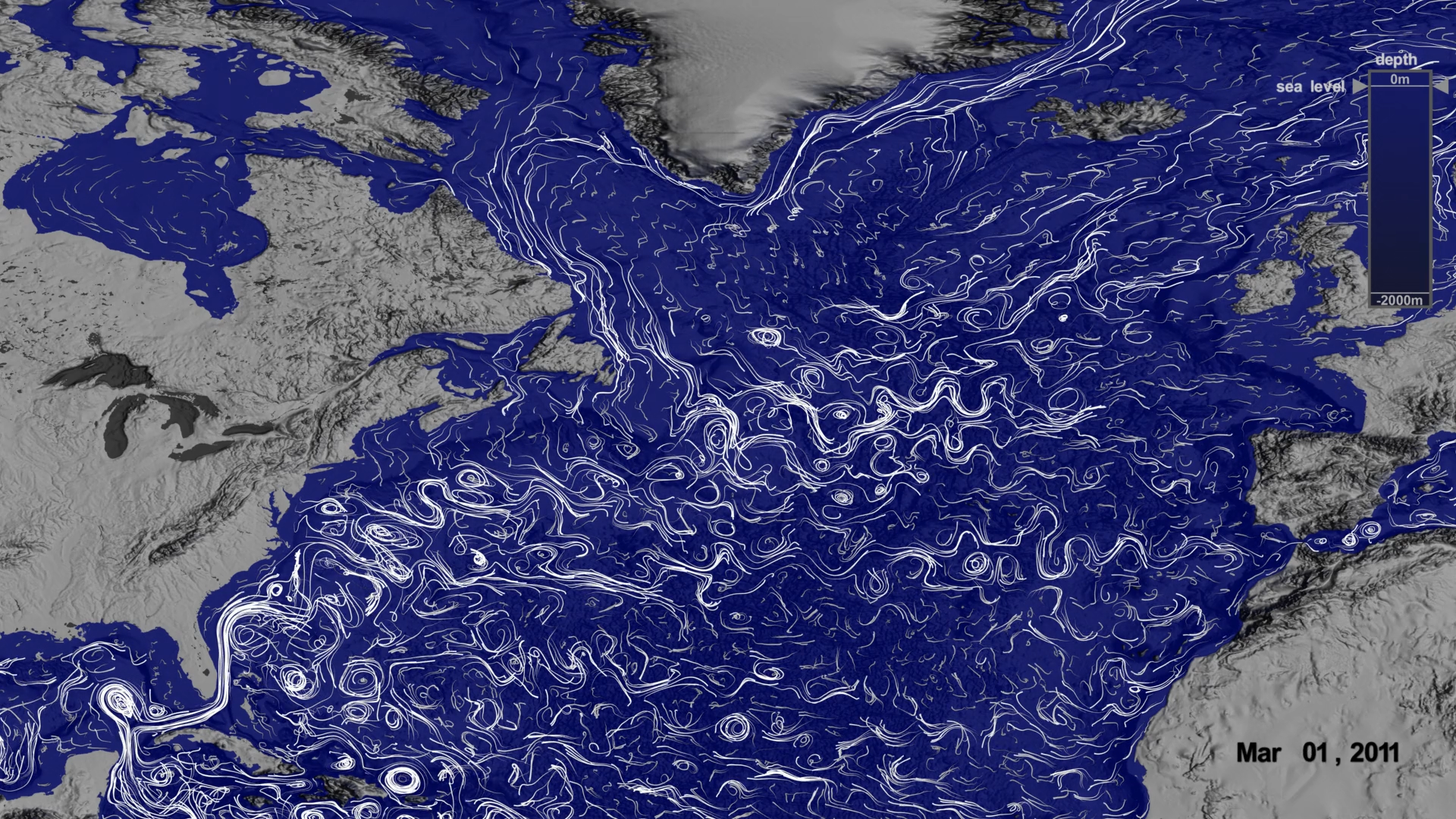



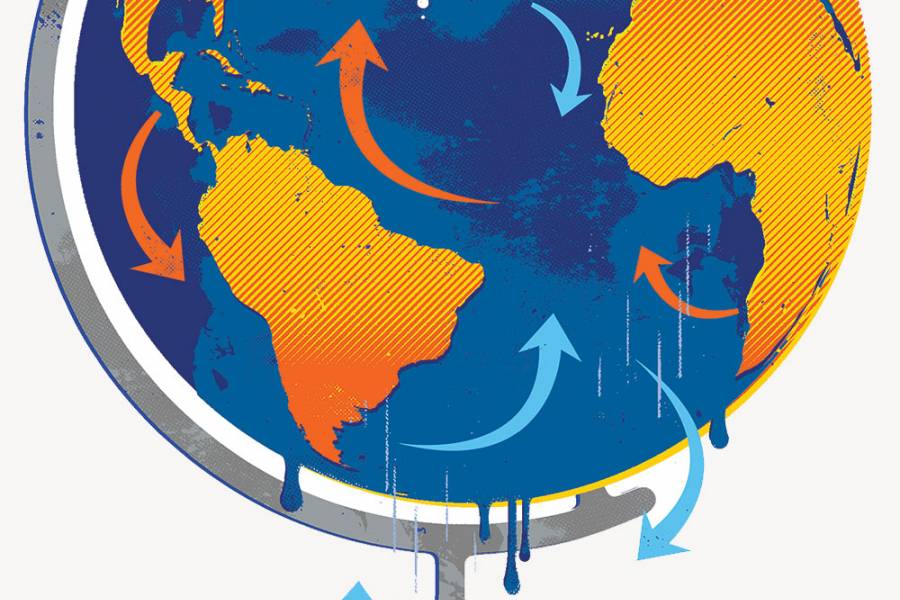
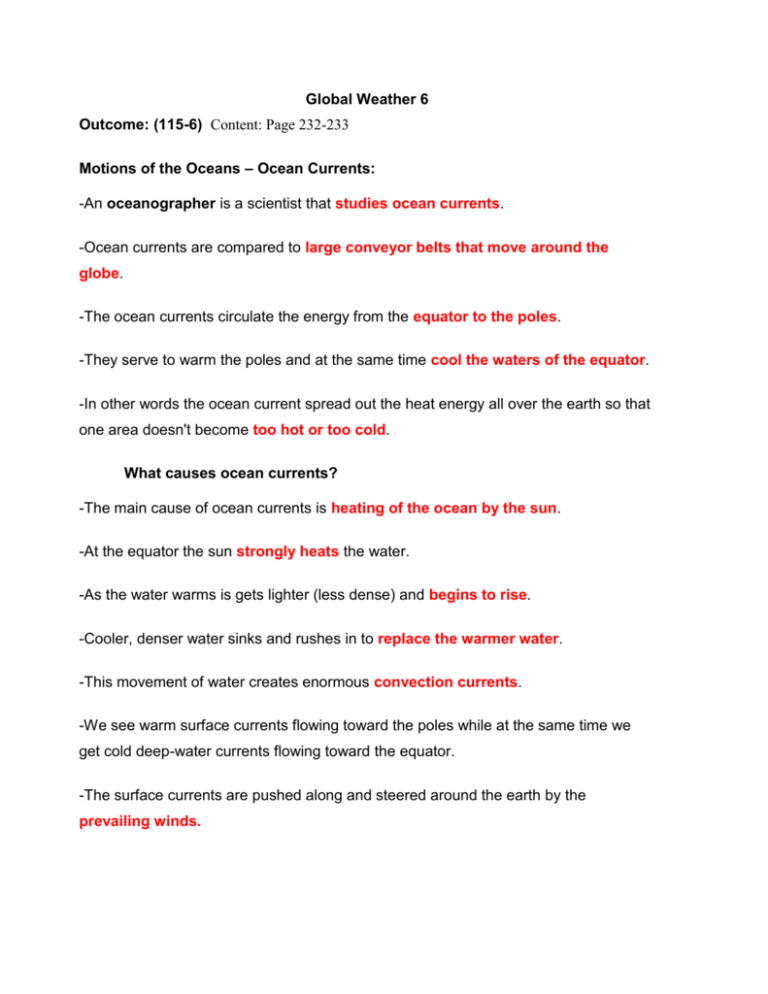

/https://tf-cmsv2-smithsonianmag-media.s3.amazonaws.com/filer/69/64/6964ec42-f74e-41eb-a7bd-4d2939689bd1/atlantic_currents.jpg)
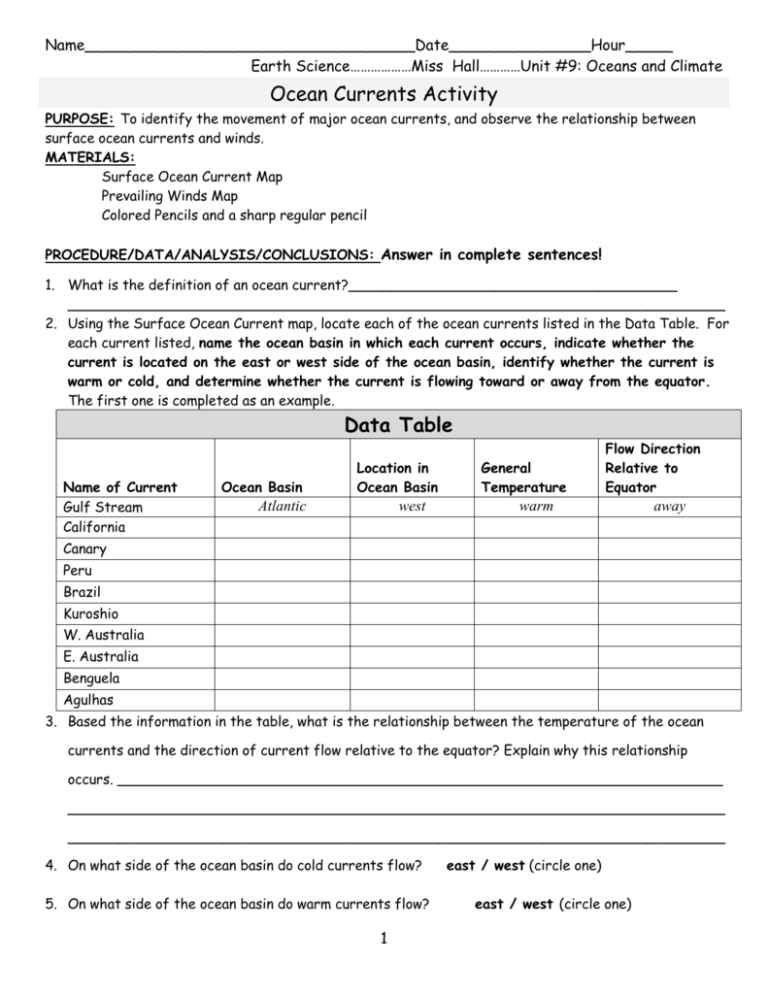


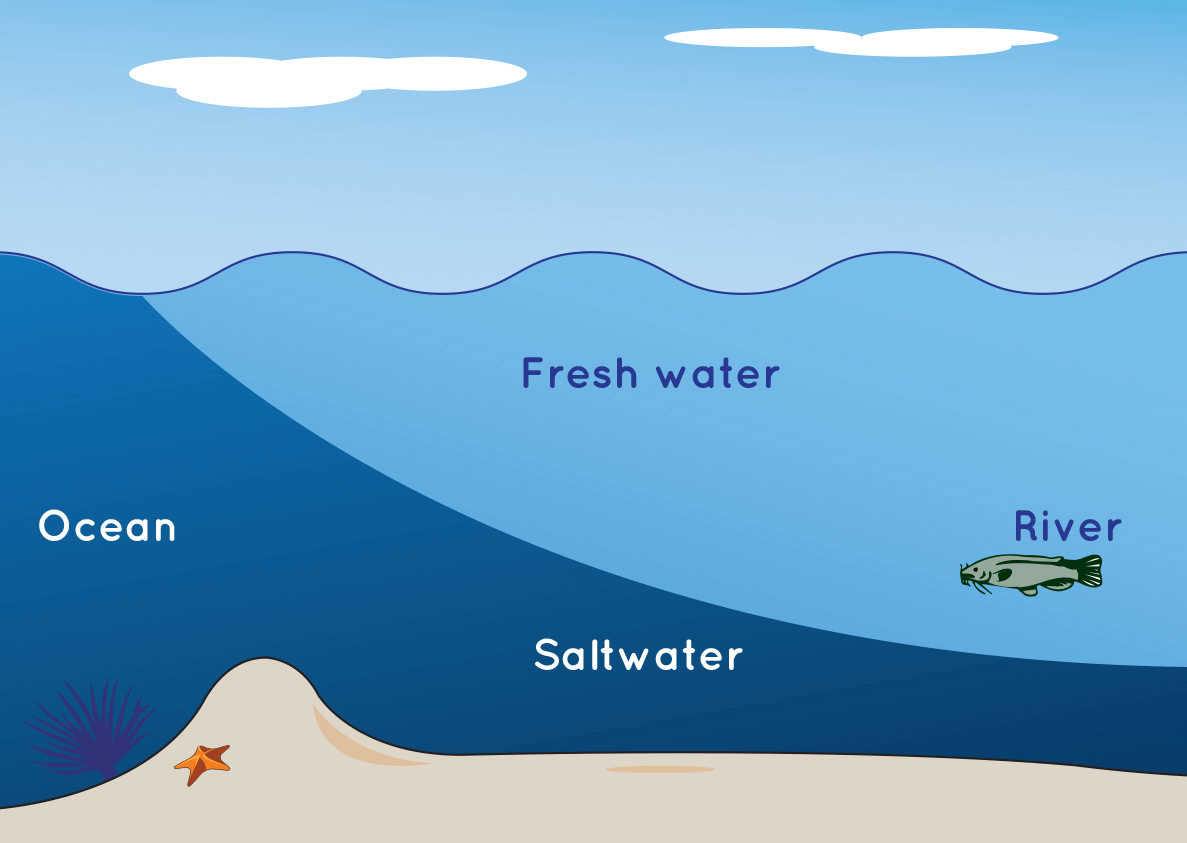

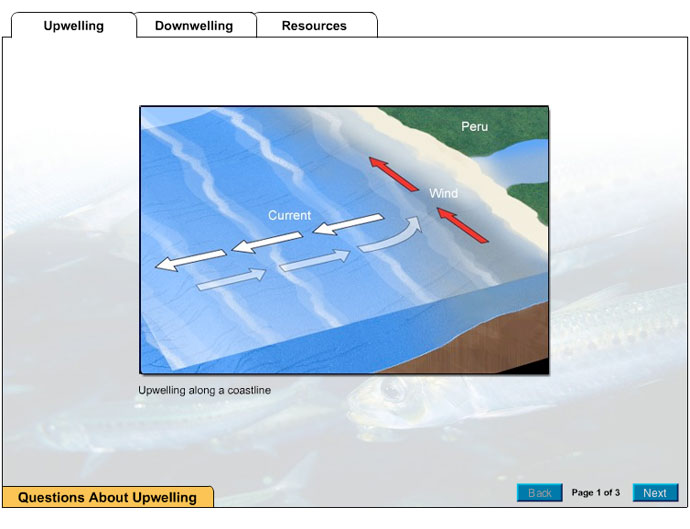
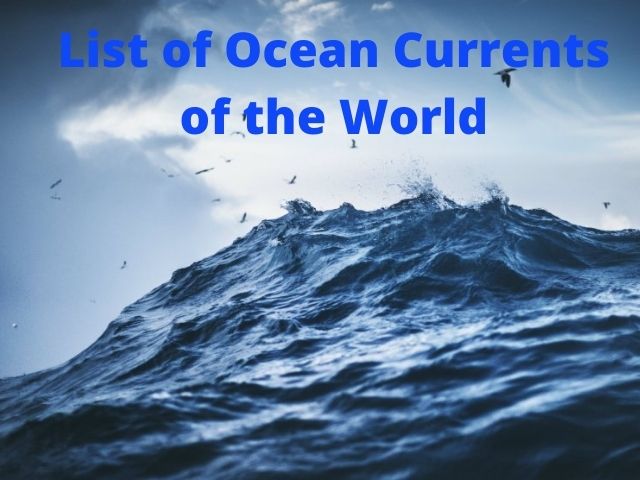




0 Response to "41 compare the movement of surface and deep currents"
Post a Comment